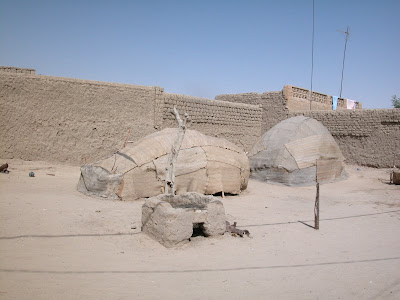All the painting and polishing was done by Ed, our worker for the last 4 months. He was amazing, always looking for something to do in between tasks, never stopped working while "on the clock". We hated to let him go when we left.
Olongapo is a busy town which used to be filled with young Navy men during the Vietnam war era but now is filled with young Filipinos going about their daily lives. Whenever we did business with them they were eager to be friendly with us and know a little something about our lives. Doing business can be very frustrating. There is definitely a difference between Filipino time and American time as we learned. Patience isn't just a virtue here, it is absolutely necessary. Even so, we easily accomplished daily tasks, like filling up our phone card:
Picking up laundry:
Getting some courtesy flags made by the slowest tailor in town. It took me 10 visits and more than two weeks to get her to complete the flags she said would be done in 4 days. She had every excuse in the book. In the end I had to sit right next to her machine and watch her as she finished the flags. Even then it almost didn't happen as while I was there I could smell something burning, a real danger in a crowded market. The electric fan exploded into flames next to me, while a lit cigarette burned a hole in another client's order.
Jim found a paint shop not too far from our boat. They didn't have color charts or computer mixing machines. You just brought in a sample of the color you wanted, and the mixer would drop a little of this and a little of that into the can and voila you would have your can of paint and the color would be right.
Don't tell the authorities, but we could buy DVD movies here for 35 pesos (less than a dollar) and a whole year of a TV series for 50 pesos. They had everything as soon as it hit the theatres. Quality was hit and miss, sometimes the movies were clumsily filmed in a crowded theater and you can here the popcorn crunching and cell phones going off in the background. Sometimes the shilouette of a head goes by the screen and sometimes the whole thing goes dark as the video thief covers his camera to avoid being discovered.
As you can see, there was nothing to go back to after the storm, so we stayed at the Yacht Club for the next month, a bit of an upgrade for us.
We enjoyed our time in Subic, but we were chomping at the bit to get moving again. Finally in late October the wind direction changed, the monsoon laid down and we prepared to leave. We still will be in the Philippines for another month or so as we make our way through the Visayas. Right now we are anchored just outside of the small marina at Punta Fuego, where the rich people live in beautiful homes overlooking the South China Sea and some small islands. We especially like the Filipino people, the real people, like Ed, Rona our laundry gal, who work for peanuts just to survive. There's hope for their future, though. I met this likable young fellow, Gabe, in the market one day and he told me his dream which was to grow up and help to feed the people who were poorer than he was and help everyone build a home.


















































